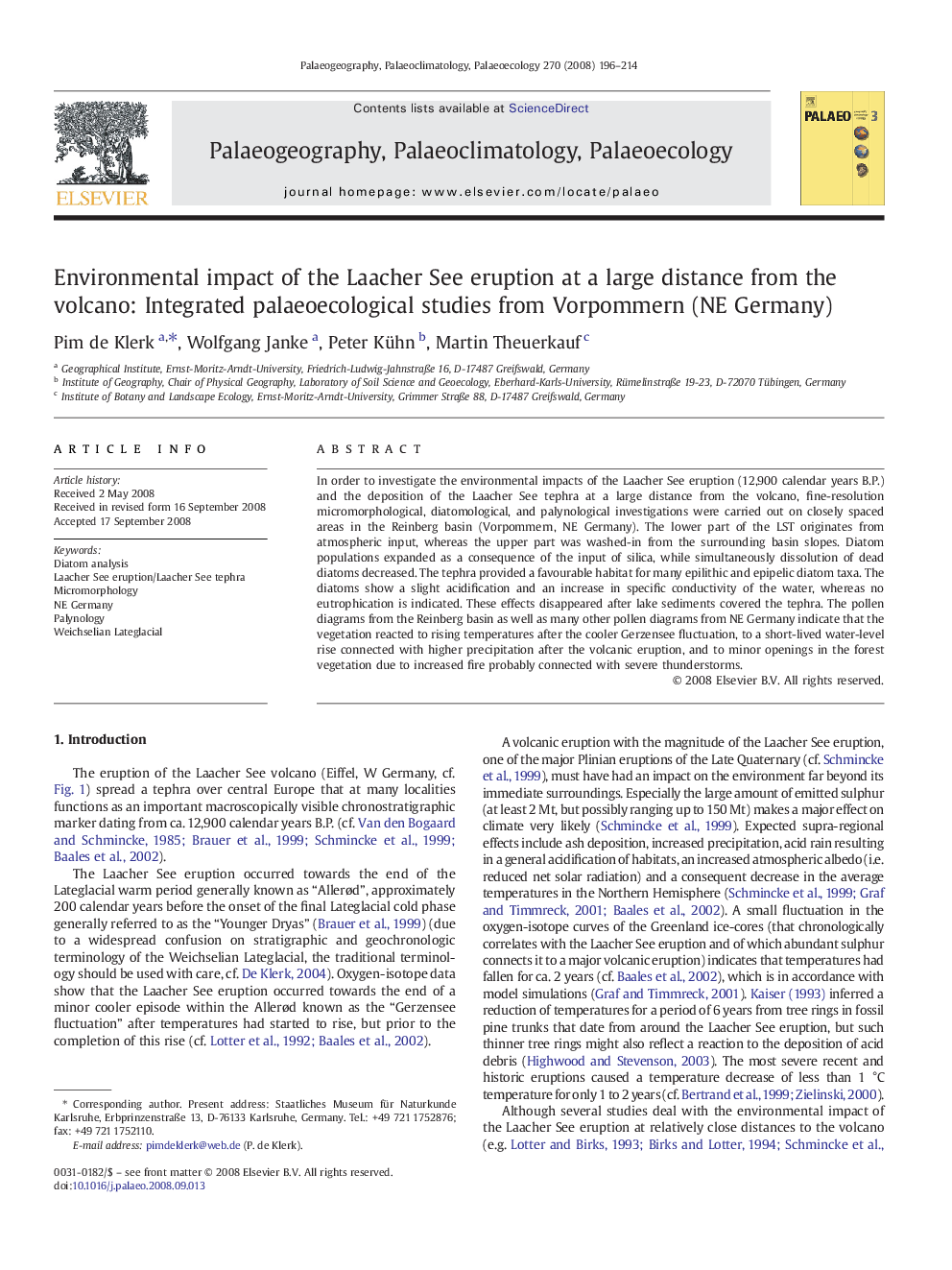| کد مقاله | کد نشریه | سال انتشار | مقاله انگلیسی | نسخه تمام متن |
|---|---|---|---|---|
| 4468328 | 1622314 | 2008 | 19 صفحه PDF | دانلود رایگان |

In order to investigate the environmental impacts of the Laacher See eruption (12,900 calendar years B.P.) and the deposition of the Laacher See tephra at a large distance from the volcano, fine-resolution micromorphological, diatomological, and palynological investigations were carried out on closely spaced areas in the Reinberg basin (Vorpommern, NE Germany). The lower part of the LST originates from atmospheric input, whereas the upper part was washed-in from the surrounding basin slopes. Diatom populations expanded as a consequence of the input of silica, while simultaneously dissolution of dead diatoms decreased. The tephra provided a favourable habitat for many epilithic and epipelic diatom taxa. The diatoms show a slight acidification and an increase in specific conductivity of the water, whereas no eutrophication is indicated. These effects disappeared after lake sediments covered the tephra. The pollen diagrams from the Reinberg basin as well as many other pollen diagrams from NE Germany indicate that the vegetation reacted to rising temperatures after the cooler Gerzensee fluctuation, to a short-lived water-level rise connected with higher precipitation after the volcanic eruption, and to minor openings in the forest vegetation due to increased fire probably connected with severe thunderstorms.
Journal: Palaeogeography, Palaeoclimatology, Palaeoecology - Volume 270, Issues 1–2, 1 December 2008, Pages 196–214